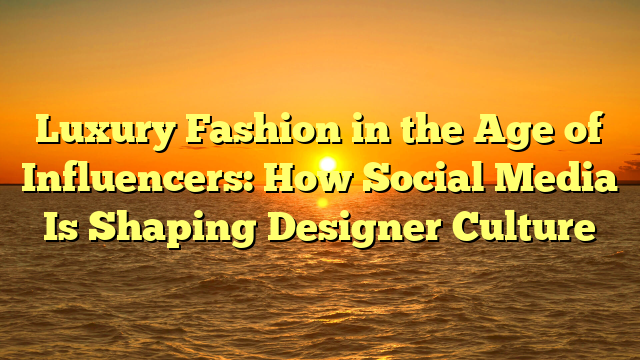
In recent years, the fashion industry has witnessed a seismic shift as luxury brands and streetwear labels join forces in groundbreaking collaborations. These partnerships, once considered unlikely, have redefined the boundaries of high fashion and casual wear, creating a new cultural phenomenon. From Louis Vuitton x Supreme to Gucci x The North Face, these mergers have not only captivated consumers but also reshaped the landscape of luxury fashion.
The rise of designer and streetwear collaborations can be traced back to the growing influence of streetwear culture. What began as a niche movement rooted in skateboarding, hip-hop, and urban youth culture has evolved into a global force, challenging traditional notions of luxury. Streetwear’s emphasis on comfort, individuality, and exclusivity resonated with a new generation of consumers, prompting luxury brands to take notice. By toto 4d with streetwear labels, high-end designers have been able to tap into this cultural zeitgeist, bridging the gap between opulence and accessibility.
One of the most iconic collaborations in recent memory is Louis Vuitton’s partnership with Supreme in 2017. The collection, which featured Louis Vuitton’s signature monogram paired with Supreme’s bold red logo, was a cultural milestone. It blurred the lines between high fashion and streetwear, appealing to both luxury enthusiasts and streetwear aficionados. The collaboration sold out within hours, demonstrating the immense power of such mergers to drive demand and generate buzz.
Similarly, Gucci’s collaboration with The North Face in 2020 showcased how luxury brands can reinvent themselves through strategic partnerships. The collection combined Gucci’s eclectic aesthetic with The North Face’s outdoor functionality, resulting in a unique blend of style and practicality. The partnership not only expanded Gucci’s reach but also reinforced its relevance in a rapidly changing fashion landscape.
These collaborations have had a profound impact on consumer behavior. By merging the exclusivity of luxury fashion with the relatability of streetwear, brands have created a new category of aspirational products. Limited-edition drops and exclusive releases have become a hallmark of these partnerships, fueling a sense of urgency and desire among consumers. This strategy has proven particularly effective in attracting younger audiences, who value authenticity and individuality.
Moreover, designer and streetwear collaborations have challenged traditional notions of luxury. In the past, luxury fashion was often associated with formality and exclusivity. However, these partnerships have introduced a more casual and inclusive approach to high-end design. Hoodies, sneakers, and graphic tees have become staples in luxury collections, reflecting a shift in consumer preferences towards comfort and versatility.
The impact of these collaborations extends beyond fashion—it’s a cultural movement. By merging the worlds of high fashion and streetwear, brands have created a new narrative that celebrates diversity and creativity. These partnerships have also provided a platform for emerging designers and streetwear labels to gain global recognition, fostering innovation and collaboration within the industry.
However, the rise of designer and streetwear collaborations is not without its challenges. Critics argue that these partnerships can dilute the identity of luxury brands, compromising their heritage and craftsmanship. Additionally, the hype-driven nature of these releases can lead to issues of overconsumption and exclusivity, alienating some consumers.
In conclusion, the merger of luxury fashion and streetwear represents a transformative moment in the industry. These collaborations have not only redefined the boundaries of high fashion but also created a new cultural paradigm that resonates with a diverse and dynamic audience. As the fashion landscape continues to evolve, one thing is clear: the fusion of designer and streetwear is more than a trend—it’s a reflection of the changing values and aspirations of modern consumers.





